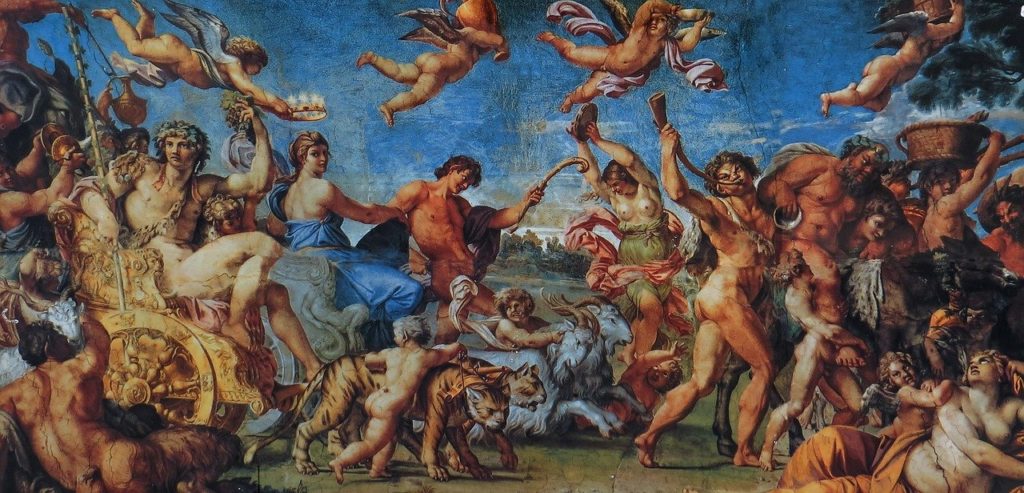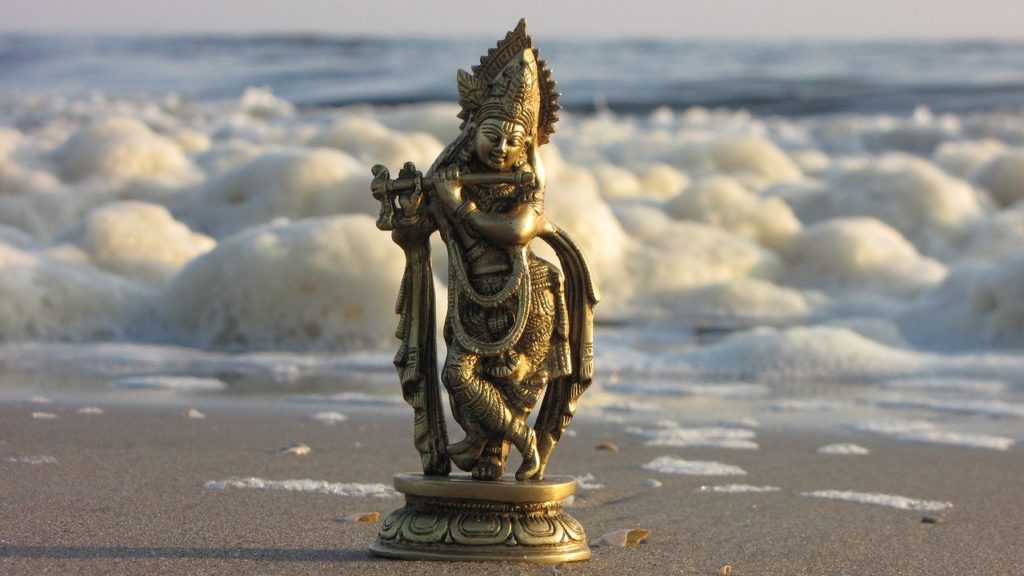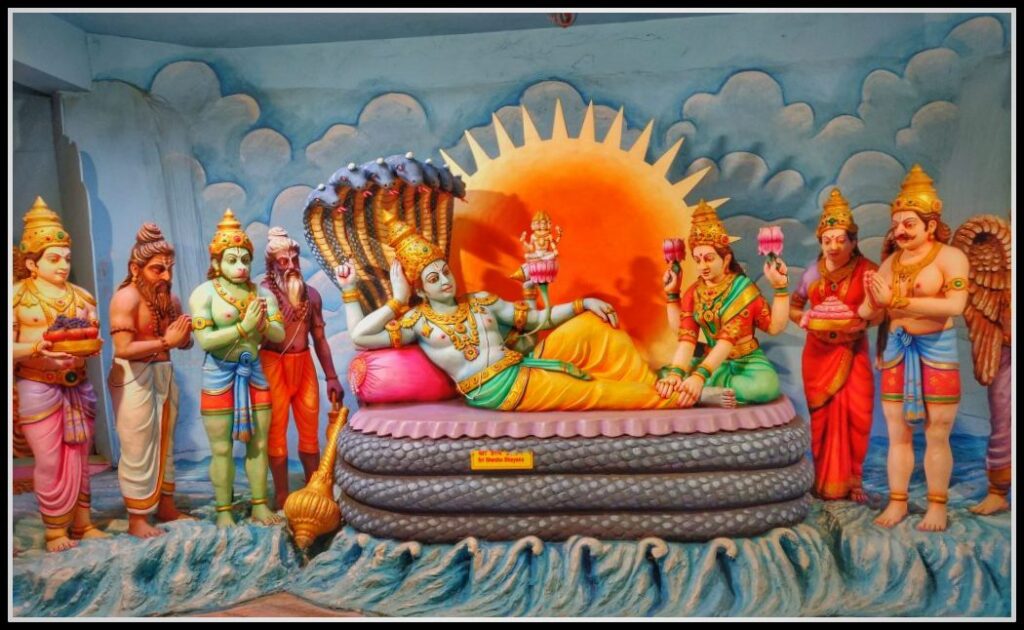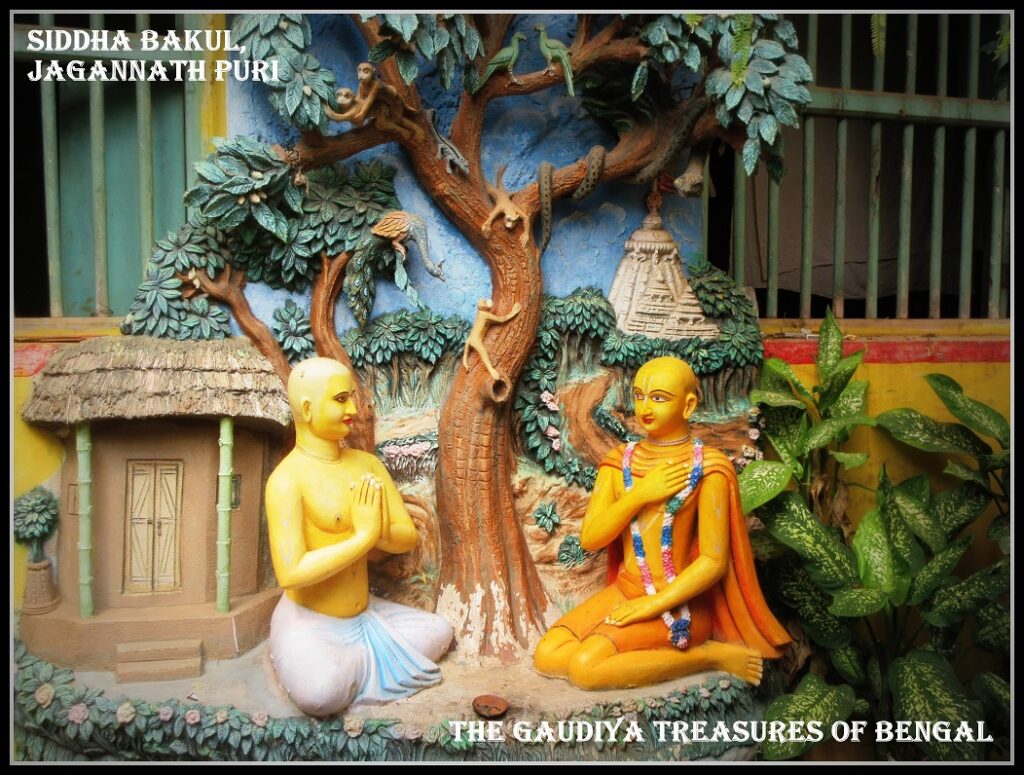
According to Sanatan Dharma, the eternal and intrinsic nature of a living entity (atman), including Man, is to perform seva (service). Sanatan dharma, being transcendental, refers to the universal and axiomatic laws that are beyond our shifting belief systems. The Vedic literatures, which are the oldest scriptures in the world, give us some much-needed insight on this subject. The Vedic scriptures, that form the very basis of the tenets of Sanatan Dharma, conclude that a living entity achieves the perfection of his existence only when he dovetails his eternal nature in serving the Supreme Lord. Instead, if he chooses to serve his own senses or his false ego, then he encircles himself in a material quagmire that only makes him suffer in multiple ways. The service attitude that a soul (atma) possesses towards Supersoul (Paramatma), is not based on any obligation, but is instead built on a foundation of a loving relationship. The whole purpose of our existence is to render loving devotional service unto the Supreme Lord, recognizing Him to be our ever well-wisher and our eternal object of love.
#1 Living entities (jiva) are parts and parcels of Krishna
Mamaivamso jiva loke jiva bhutah sanatanah
Manah sasthanindriyani prakriti sthani karsati
(Bhagavad Gita 15.7)
–
The living entities (jiva) in this material world are My eternal fragmental parts. Because of conditioned life, they are struggling hard with the six senses, including the mind.
#2 Nature of the soul – Beyond birth and death
Na jayate mriyate va kadachin nayam bhutva va na bhuyah
Ajo nityah sasvato yam purano na hanyate hanyamane sarire
(Bhagavad Gita 2.20)
–
For the soul, there is neither birth nor death. He has not come into being, does not come into being, and will not come into being. He is unborn, eternal, ever-existing, immortal, and primeval. He is not killed when the body is killed.
#3 Nature of the soul – immune from weapons and material elements
Nainam chindanti sastrani nainam dahati pavakah
Na cainam kledayanty apo na sosayati marutah
(Bhagavad Gita 2.23)
–
The soul can never be cut into pieces by any weapons, nor can he be burned by fire, moistened by water, or faded by the wind.
#4 Nature of the soul – Unchangeable and eternal
Acchedyo yam adahyo yam akledyo sosya eva ca
Nityah sarva gatah sthanur acalo yam sanatanah
(Bhagavad Gita 2.24)
–
This individual soul is unbreakable and insoluble, and can never be scorched nor dried. He is endless, all-pervading, unchangeable, immovable, and eternally the same.
#5 Living entities (jiva) originate from the Supreme Lord
Yathagne ksudra visphulinga vyuccaranti evamevasmaa atmanah
Sarva pranah survey lokah sarve devah sarvani bhutani vyuccaranti
(Brihadaranyaka Upanishad 2.1.20)
–
As innumerable sparks emanate from a great fire, similarly all the living entities (jivas) with their particular characteristics emanate from the Supersoul (Paramatma), along with their gods, planets, animate and inanimate beings.

Isvarera tattva yena jvalita jvalana
Jivera svarupa yaiche sphulingera kana
(Chaitanya Charitamrita, Adi, 7.116)
–
The Supreme Lord is like a great blazing fire, and the living entities are like minute sparks of that fire.
#6 Dimensions of the soul & the Life air
Balagra sata bhagasya satadha kalpitasya ca
Bhago jivah sa vijneyah sa canantyaya kalpate
(Svetasvatara Upanishad 5.9)
–
If we divide the tip of a hair into one hundred parts and then take one part and divide this into another one hundred parts, that ten-thousandth part is the dimension of the spirit soul.

Eso nuratma cetasa veditavyo
Yasmin pranah panchadha samvivesa
Pranais cittam sarvam otam prajanam
Yasmin visuddhe vibhavaty esa atma
(Mukunda upanishad 3.1.9)
–
The soul is atomic in size and can be perceived by perfect intelligence. This atomic soul floats in five kinds of air (prana, apana, vyana, samana and udana). It sits within the heart and spreads its influence throughout the body of the embodied living entity. When the soul is cleansed from the contamination of the five kinds of material air, its spiritual influence is revealed.
#7 Matter and Spirit (soul) do not mix
Yatha sarva gatam sauksmyad akasam nopalipyate
Sarvatravasthito dehe tathatma nopalipyate
(Bhagavad Gita 13.33)
–
The sky due to its subtle nature does not mix with anything, although it is all-pervading. Similarly, the soul, being spiritual, although it is present within the body, does not mix with the body.
#8 The soul’s constitutional position
Sa brahmakah sa rudrasca sendra deva maharsibhih
Arcayanti sura sestham devam narayanam harim
(Mahabharata)
–
The Brahmas, Rudras, Indras, the great sages, as well as the demigods – all worship Lord Hari, Sri Narayana, the Supreme God.Jivera svarupa haya krsnera ‘nitya-dasa’
Krsnera ‘tathastha-sakti’, ‘bhedabheda-prakasa’
Suryamsa kirana, yaiche agni jvala caya
Svabhavika krsnera tina prakara ‘sakti’ haya
(Chaitanya Charitamrita, Madhya, 20.108-109)
–
The living entity’s constitutional position is to be an eternal servant of Krishna, the Supreme Lord. As a manifestation of Krishna’s marginal potency, he is simultaneously one and different from the Supreme Lord, as a particle of sunshine or a spark of fire (that are one and different from the Sun and fire simultaneously). Krishna has three varieties of energy (internal, marginal, and external).
#9 The Jiva (living entity) is qualitatively the same as the Supreme Lord
Sarvam khalv idam brahma
(Chandogya Upanishad, 3.14.1)
–
Everything, both matter, and spirit are non-different from the Supreme Personality of Godhead who is the Supreme Brahman.Atmaivedam sarvam iti
(Chandogya Upanishad, 7.25.2)
–
This entire cosmic phenomenon is atma, the Supreme soul
Sad eva saumyedam agra asid ekam evadvitiyam
(Chandogya Upanishad, 6.2.1)
–
Uddalaka said to his son Svetaketu, “Before this phenomenal universe came into being, only the one non-dual eternal being was present”.

Isvarera tattva yena jvalita jvalana
Jivera svarupa yaiche sphulingera kana
(Chaitanya Charitamrita, Adi, 7.116)
–
The Lord is like a great blazing fire, and the living entities are like small sparks of that fire.
#10 The Supreme Lord is distinct from the living entity (jiva)
nityo nityanam cetanas cetananam eko bahunam yo vidadhati kaman
(Katha upanishad, 2.2.13)
–
The Supreme Lord (Bhagawan) is the Supreme eternal amongst all other eternal beings. He is the fundamental conscious being among all the other conscious beings. The difference lies in the fact that the Supreme Lord is supplying the necessities of life for all the other living entities.dva suparna sayuja sakhayah samanam vriksham parishasvajate tayor anyah pippalam svadv atty anasnann anyo ‘bhicakasiti
(Mukunda Upanishad, 3.1.1)
–
The Lord and the living entity are compared to two birds sitting in the same tree. While the illusioned living entity eats the fruits of the material world, the Lord as Supersoul and best friend witnesses these actions.satyam jnanam anantam brahma
Yo veda nihitam guhayam parame vyoman
So snute sarvan kaman saha brahmana vipasciteti
(Taittiriya Upanishad, 2.1.2)
–
The supreme absolute Brahman is the embodiment of eternity, spirituality and He is transcendental to the purview of material time, place, and senses. One who has realized this truth that the Supreme Brahman is simultaneously situated in the spiritual sky and also in the heart of the jiva is sublimely attached with the Supersoul in a loving relationship that fulfills all his spiritual desires.

Yasmat param naparam asti kinchid
Yasman naniyo na jyayo sti kinchit
Vriksha iva stabdho divi tisthaty ekas
Tenedam purnam purusena sarvam
(Svetasvatara Upanishad, 3.9)
–
There is no one superior to Him (Supreme Lord). He is smaller than the smallest and greater than the greatest. He always stays fixed in His situation like a tall towering tree. He is always present in the resplendent abode of transcendence, and simultaneously He resides in the inner Sanctorum of the universe, as the Paramatma (Supersoul), by dint of His inconceivable prowess.Yatha samudre bahavas taranga statha vayam brahmani bhuri jivah
Bhavet tarango na kadacid abdhi stvam brahma kasmad bhavitasi jiva
(Tattva muktavali 10)
–
O soul, just as there are unlimited waves in the ocean, similarly, within the ocean of consciousness there are innumerable living entities (jivas). If a wave cannot become the ocean, how can a soul become the Supreme Lord?
#11 Liberation from all material suffering
jnatva devam sarva pasapahhanih
Ksinaih klesair janma mrtyu prahanih
Tasyabhidhyanat trtiyam dehabhede
Visvesvaryam kevala aptakamah
(Svetasvatara Upanishad 1.11)
–
By understanding the truth of the Supreme Lord, one can slip the bonds of material bondage and escape from the miseries of repeated birth and death. Liberated from the gross and subtle material bodies, as an associate of the Supreme Lord in His transcendental abode, he attains a spiritual form and realizes all his desires.Sadhu sastra kripaya yadi krsnonmukha haya
Sei jiva nistare, maya tahare chadaya
(Chaitanya Charitamrita, Madhya, 20.120)
–
If the conditioned soul becomes Krishna conscious by the mercy of the sages and the holy scriptures, the conditioned soul is freed from the clutches of Maya, who releases him.
#12 Reviving the constitutional nature of the soul
Krsna bhuli sei jiva anadi bahirmukha
Ateva maya tare deya samsara duhkha
Kabhu svarge uthaye kabhu narake dubai
Dandya jane raja yena nadite chubaye
(Chaitanya Charitamrita, Madhya, 20.117-118)
–
Forgetting Krishna, the living entity has been attracted by the external energy (Maya) of the Lord from time immemorial. Therefore the illusory energy gives him all kinds of material misery. As a result, sometimes he is raised to heaven, and sometimes he is drowned in hell, just as a criminal is raised and submerged into water by the King again and again.

nitya-siddha Krishna-prema ‘sadhya’ kabhu naya,
sravanadi suddha chitte karaye udaya
(Chaitanya Charitamrta, Madhya, 22.107)
–
Pure love for Krishna is eternally established in the hearts of the living entities. It is not something to be gained from an external source. When one’s heart is purified by the regular hearing and chanting of Krishna’s holy name and glories, this love naturally awakens.